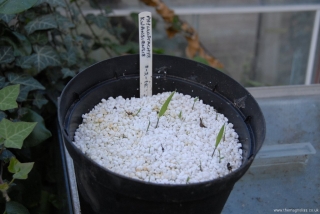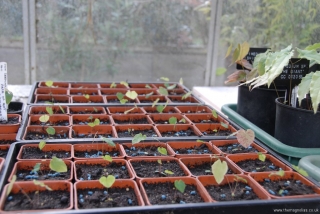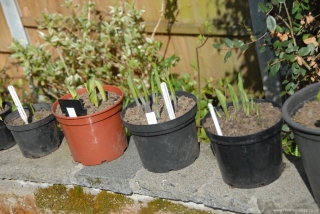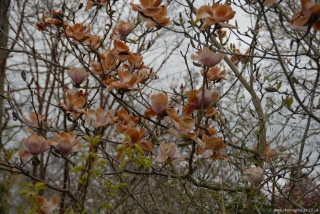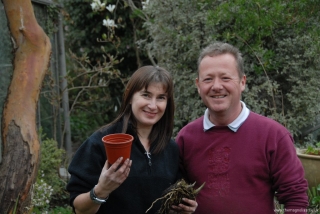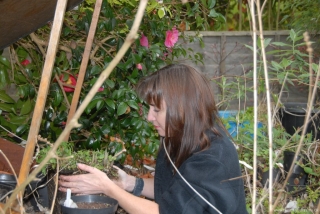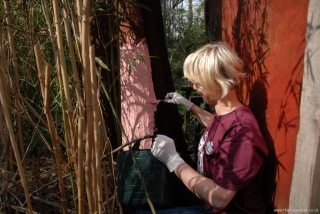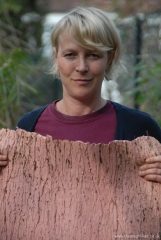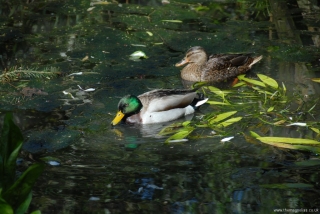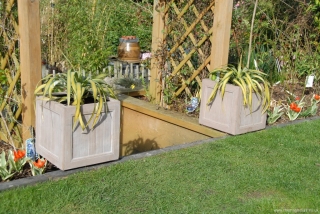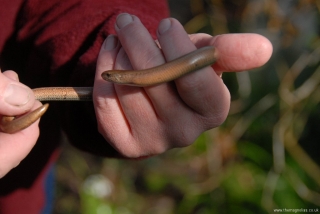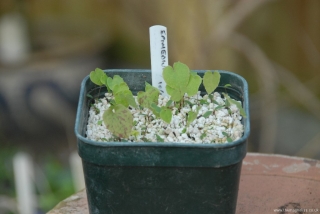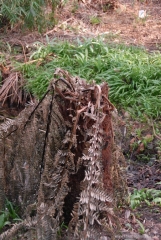A few years ago I was very pleased to obtain a very small plant of Phyllostachys kwangsiensis. It sounded as though it was a very exciting addition to my bamboo collection, as it is said to have many of the desirable features of Phyllostachys edulis, but doing them much quicker in the UK climate. Indeed it had heavily pubescent culms when they appeared and small leaves in profusion.
Last month I sowed some small seed like material, I had collected in the autumn, with no great optimism. However a week or so ago it started to germinate, much to my excitement, and now there are around a dozen seedlings.
I have potted off my pan of open pollinated Epimedium seedlings and currently have just
over forty. I say currently because two have already been eaten despite the trays sitting on a dry polystyrene board which I thought would deter slugs and snails and having a generous sprinkling of slug pelets over them. After staring at the seedlings for some time I spotted one tiny green caterpiler around a centimeter long and a milimetre in diameter. I am hoping he may be the culpret, but wonder if there’s one there may be more.We have continued the good work of Karen, our volunteer gardener with our potted Hosta collection.
We have carried on weeding, potting on as necessary and putting on slow release fertilizer and wool, anti mollusc pellets, over the Hosta pots. We have now run out of the latter and are debating whether to buy more, or leave the rest of our Hostas as a control, to see how effective the deterrent effect of wool actually is.
